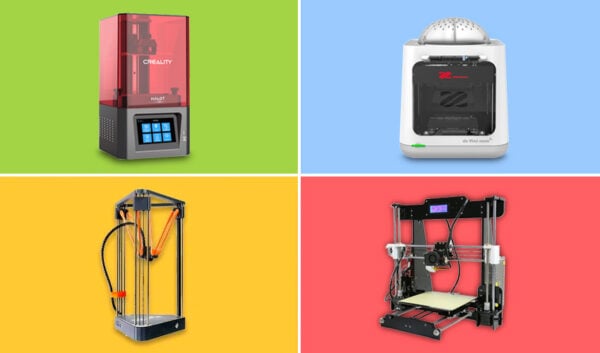Marvel of Innovation: 3D Printers
The world of technology is constantly evolving, surprising us with innovative marvels that reshape our lives and industries. One such groundbreaking invention is the 3D printer, a cutting-edge technology that has taken the manufacturing world by storm. This blog delves into the fascinating realm of 3D printers, exploring their functionalities, applications, and the potential they hold for the future.
Understanding 3D Printers
In essence, a 3D printer is a device that can create three-dimensional objects from digital designs by adding successive layers of material until the final product is complete. This process is known as additive manufacturing. Unlike traditional manufacturing methods that involve subtractive processes, where materials are cut or carved out, 3D printing offers unparalleled efficiency and precision.

How 3D Printers Work
At the core of a 3D printer lies its ability to interpret digital designs, usually in the form of Computer-Aided Design (CAD) files. The printer then translates these virtual blueprints into tangible objects. The process typically follows these steps:
- Designing the Model: Using CAD software, designers create a 3D model of the desired object. This virtual design serves as the foundation for the printing process.
- Slicing: The 3D printer’s software slices the digital model into horizontal layers. These layers act as instructions for the printer, guiding it to add material layer by layer.
- Printing: The 3D printer starts printing the object layer by layer, often using materials like plastic, metal, resin, ceramics, or even food-based materials, depending on the printer’s capabilities and the specific application.

Applications of 3D Printers
- Rapid Prototyping: 3D printing has revolutionized product development by enabling quick and cost-effective prototyping. Companies can now test and refine their designs in a matter of days, significantly speeding up the innovation process.
- Aerospace and Automotive Industries: These sectors leverage 3D printing to create lightweight and intricate components that improve fuel efficiency, reduce costs, and enhance performance.
- Healthcare: 3D printers have played a crucial role in medical advancements, producing custom prosthetics, surgical guides, and even 3D-printed organs. This technology has the potential to transform patient care and medical research.
- Education: 3D printers in educational settings encourage creativity and innovation, allowing students to bring their ideas to life and gain a deeper understanding of complex concepts.
- Architecture and Construction: Architects and construction firms use large-scale 3D printers to create models, prototypes, and even entire building components, making construction processes more efficient and sustainable.
- Fashion and Design: Fashion designers and artists experiment with 3D printing to craft unique and intricate clothing, jewelry, and accessories that push the boundaries of traditional design.
Advantages and Challenges
Advantages of 3D printers:
- Rapid prototyping and reduced time-to-market for products.
- Customization and personalization of goods.
- Reduced material wastage, making it an eco-friendly option.
- Accessible and cost-effective manufacturing for small businesses and entrepreneurs.
Challenges:
- Limited material options and properties compared to traditional manufacturing processes.
- High initial investment costs for advanced 3D printing technologies.
- Intellectual property concerns, as it becomes easier to replicate designs.
Future Outlook
The future of 3D printing holds immense promise. As technology advances, we can expect:
- Expanded Material Options: Researchers are continuously exploring new materials, including biodegradable substances and conductive elements, which will widen the applications of 3D printing.
- Faster Printing Speeds: Advancements in printer technology and slicing algorithms will improve printing speeds, making the process even more efficient.
- Medical Breakthroughs: The potential to bioprint human organs could revolutionize the healthcare industry, addressing the organ transplant shortage.
- Integration with AI and IoT: 3D printers could seamlessly integrate with AI and the Internet of Things, allowing autonomous printing and adaptive manufacturing processes.
Conclusion
3D printers have ushered in an era of innovation and creative possibilities. From revolutionizing manufacturing to transforming healthcare, this incredible technology is reshaping industries and our lives. As researchers and engineers continue to push the boundaries of 3D printing, we can expect even more astonishing breakthroughs that will shape the future in unimaginable ways. Embracing this technology with a responsible and forward-thinking approach will undoubtedly lead us to a brighter and more exciting tomorrow.

